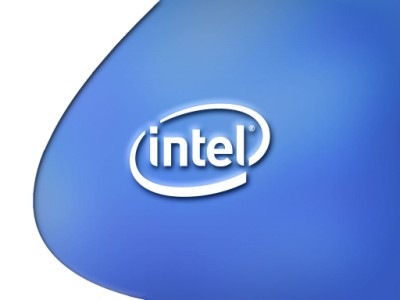 The dream of taking Internet Become an expert on SEO, consumer behavior, email marketing, web analytics and more Internet marketing fundamentals. Click here. TV to an actual TV seems a no-brainer to consumers: a screen's a screen, and a monitor's just another screen, after all. However, there's more to the technology than meets the eye or fits the couch potato's view. Even so, Intel (Nasdaq: INTC) More about Intel made a huge step toward plugging the Internet TV play on Thursday when it unveiled Atom processor CE4100 (code-name "Sodaville") -- its 45nm System-on-Chip for Internet TV.
The dream of taking Internet Become an expert on SEO, consumer behavior, email marketing, web analytics and more Internet marketing fundamentals. Click here. TV to an actual TV seems a no-brainer to consumers: a screen's a screen, and a monitor's just another screen, after all. However, there's more to the technology than meets the eye or fits the couch potato's view. Even so, Intel (Nasdaq: INTC) More about Intel made a huge step toward plugging the Internet TV play on Thursday when it unveiled Atom processor CE4100 (code-name "Sodaville") -- its 45nm System-on-Chip for Internet TV.
The CE4100 processor is the first 45nm-manufactured consumer electronics SoC based on Intel architecture. It supports Internet and broadcast applications on one chip, and has the processing power and audio/video components necessary to run rich media applications such as 3-D graphics.
Is this remarkable advancement enough to make a real change in TV?
"It's an incredibly powerful product -- and at 45nm, it's far closer to what the industry needs," John Barber, a research analyst at Gartner (NYSE: IT) More about Gartner, told TechNewsWorld. "But it's still questionable in terms of industry adoption, simply because current architectures are under tremendous price pressures from box manufacturers."
Intel will "make a significant impact in Internet TV in scale and market share when it reaches 32nm and below," added Barber.
Cracking the Navigation Nut
One could also make the argument that the cable industry, in particular, is badly in need of some oomph in its sagging numbers during this recession. Normally, cable subscriptions increase during a recession; people seek more in-home entertainment since they can't afford to go out. Not this time.
Instead, Netflix (Nasdaq: NFLX) More about Netflix and other alternative competitors are cleaning cable companies' clocks and cleaning out their coffers. It is conceivable, then, that cable could pressure box manufacturers to turn out the Intel chip at supersonic speed. Maybe. It's also possible that alternative competitors may beat cable to the punch once again. This time, it might even be a TKO.
"Navigation is the No. 1 challenge for today's television viewers," said George Schweitzer, president of CBS marketing. "Intel's CE technology and our new TV Widget platform are designed to help people find the shows they want and discover new programs that are relevant to their interests. What's more, the TV Widget gives us another platform to connect and interact with our audience while delivering an exciting new television experience."
Intel is working with the industry to expand Widget Channel, in order to provide consumers with a range of services such as movies, music, games and personal videos.
"Web content to the TV will evolve and come via many types of devices," Mary Ragland, spokesperson for Intel, told TechNewsWorld. "Consumers will see connected CE devices coming to market -- like advanced set-tops and Blu-ray Disc players powered by Intel media processors -- to bring Web content and entertainment to their TVs. As business models and products evolve, this will eventually come to HDTVs."
Chicken, Egg, Rooster
"Eventually" may be the operative word, however.
"Internet TVs are a long way from making inroads in consumer households, and it's not just because they don't have an Intel chip inside," James L. McQuivey, vice president and principal analyst at Forrester, told TechNewsWorld.
"It's mostly because TV makers have been trying to use their own silicon to keep costs down while they wait to see if connected TVs will even sell. It's not just a chicken-and-egg problem," McQuivey explained, "it's a chicken-egg-and-rooster problem -- by which I mean that TV makers are waiting to see if consumers want these TVs; consumers are waiting to see if there will be any valuable content on these TVs from content providers; content providers are waiting to see if consumers are going to want these TVs. Basically, everybody's waiting to see what everyone else will do."
Any TV maker that decided to incorporate Intel chips now would be making a "big leap," McQuivey continued, and that's not likely to happen unless there's some strong indication consumers would be willing to pay a premium price for them.
"If Intel can get its TV chips down in form factor and therefore at a better price point, it will obviously help," said McQuivey, "but will it happen fast enough so that TV makers don't commit to some less effective but less expensive alternative? That's the big question right now."
Comments
Post a Comment